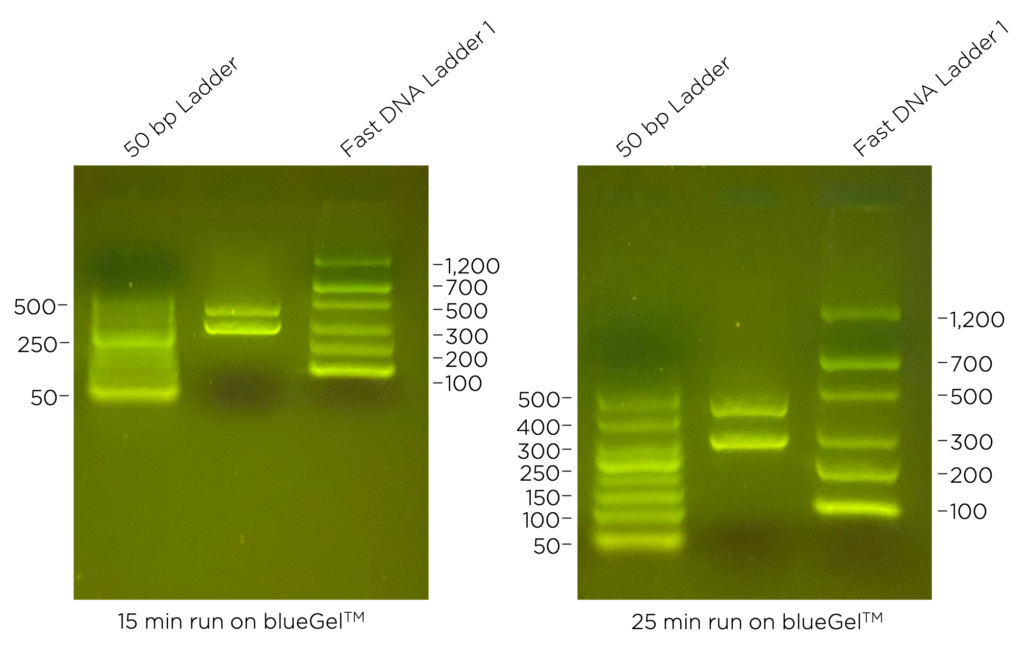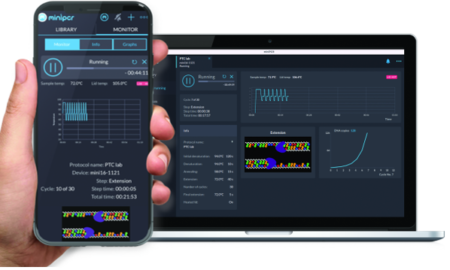Choosing the right DNA ladder
When performing gel electrophoresis, scientists include DNA ladders that contain DNA fragments of known sizes. The ladder enables scientists to estimate the size of the DNA bands in their experimental samples by comparing them to the closest fragment in the ladder. Using the correct ladder will help you estimate your DNA band sizes accurately and quickly. But there are so many different DNA ladders! How do you choose the best one for your experiment?
Size range
The most important factor in choosing a DNA ladder is the expected size of the DNA bands in your experiment. You want to make sure that the range of the DNA ladder, from its smallest to its largest fragment, includes the expected size of the DNA fragments you are testing (Figure 1). For example, if you are expecting small DNA fragments of 50 base pairs (bp), then you need to make sure the DNA ladder you select contains bands at least that small. On the other hand, if one of your samples contains a large 3 kilobase (kb) DNA fragment, then you need to make sure the DNA ladder you select contains bands that large.

Number of bands in a given size range
The other major consideration is the number of bands in the ladder over a given size range. Using a ladder with more bands within a given range makes it easier to accurately estimate the size of the DNA fragments in your samples. However, the trade-off is that you need to run the gel longer to clearly interpret a ladder with more bands. If knowing the precise size of a band is important, choose a ladder with more bands and run your gel for a longer time. If time is limited, or a rough estimate of band size is sufficient, choose a ladder that doesn’t have as many bands.

So which ladder is right for your experiment?
In the end, scientists choose from a broad range of different ladders depending on the needs of each specific experiment. It also comes down to personal preference—it can help to experiment with a few different ladders and figure out which ones you like best.

DNA Ladders available from miniPCR bio
| DNA Ladder | Size range | No. of bands | Load Ready™? |
|---|---|---|---|
| 50 bp DNA Ladder | 50 – 500 bp | 8 | Yes |
| 100 bp DNA Ladder | 100 – 1,000 bp | 10 | Yes |
| Fast DNA Ladder 1 | 100 – 1,200 bp | 6 | Yes |
| 1 kb DNA Ladder | 300 – 10,000 bp | 13 | Yes |
– Contributed by miniPCR bio curriculum specialist Allison Nishitani, PhD
Related resources:










